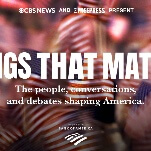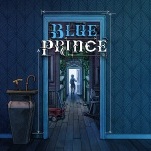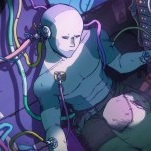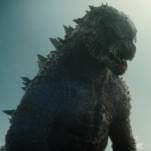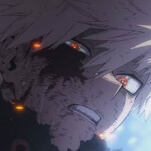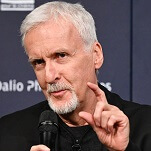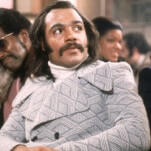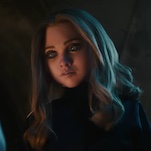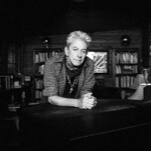Each week, Big Issues focuses on newly released comic-book issues of significance. This week, it’s the first week of DC’s Villains Month, including Forever Evil #1 by Geoff Johns (Justice League, Aquaman) and David Finch (Justice League Of America, Batman: The Dark Knight). The 14 titles vastly differ in quality, and the month-long gimmick continues to show how DC editorial is interfering with the growth of its titles. (Warning: major spoilers ahead.)
DC Comics is familiar with crisis, whether it’s On Infinite Earths, Infinite, or Final, but Villains Month isn’t the type of crossover crisis situation the publisher has faced in the past. The major emergency here is happening off the page, as DC gambles its relationship with retailers and readers for its latest September gimmick. The publisher celebrated the first anniversary of The New 52 last year with #0 issues that elaborated on past events in the rebooted universe, which interrupted some storylines, but ultimately wasn’t too detrimental to the individual titles. Every book got a #0 issue, so at least readers still got to follow their regular monthly titles.
That’s not the case this year as DC replaces its superhero books with one-shots spotlighting the villains of The New 52, lumping the issues together under specific titles using .X numbering (e.g., Darkseid, Lobo, Dial E, and Secret Society one-shots are published weekly as Justice League #23.1-#23.4.) It sounds needlessly complicated because it is, and it’s a headache for retailers that are organizing the customer pull lists and trying to figure out what the demand for a Desaad one-shot is going to be. A local comic shop manager once gave a spiel to pull-list subscribers as she handed them a sheet of paper outlining the names and creative teams of each issue, informing customers that the store would only pull what was selected on that sheet to prevent people from getting books they don’t want.
She also emphasized that these books would have 3-D lenticular covers, which will cost an extra dollar but hopefully look cool, and it seemed to work as a selling point. Months later, DC announced that, because of the time it takes to create 3-D covers, the printing had to occur before the order cut-off dates, which DC had neglected to change for retailers. The publisher estimated the 3-D numbers for certain titles based on previous orders and offered returnable 2-D covers because of the hassle. At a nearby shop this Wednesday, about 20 percent of the stock for each title featured a 3-D cover, which did indeed look cool, but not nearly cool enough to justify the damage done to DC’s relationship with retailers. Luckily, almost all the books in this first week have the solicited creative teams, although three titles have different artists than originally announced: Sami Basri and Carmen Carnero replace Pasqual Ferry on Deadshot, ChrisCross is joined by Fabrizio Fiorentino and Tom Derenick on Creeper, and Paulo Siqueira is joined by Netho Diaz on Darkseid.
So how are the books? They’re a mixed bag, ranging from utterly forgettable to sufficiently entertaining, but nothing is incredibly impressive in this first week. The best installments delve into the past of the central rogue to offer new insights on the character (Ventriloquist, Poison Ivy, Deadshot, Relic) while the lackluster stories tend to focus on bad guys being bad (Joker, Desaad, Creeper), which gets pretty old after a while. The whole event kicks off with Forever Evil #1, a continuation of plot threads from the “Trinity War” that never really ended. Justice League #23 concluded with the Crime Syndicate appearing from the interdimensional portal in Pandora’s Box, and Forever Evil picks up with the Justice League already defeated by their Earth-3 counterparts.
The world belongs to the Crime Syndicate, which has given the villains of the DC universe free rein to do what they want with it. To prove its might, the Crime Syndicate unmasks Nightwing and exposes his secret identity on international television, which isn’t the most original plot development, but is better than an unnecessary superhero killing. The general idea of the Crime Syndicate is fairly shallow—the Justice League, but evil—and it’s a bunch of completely stereotypical antagonists in this first issue that appear out of nowhere, immediately neutralize the heroes, and radically change the entire landscape of the DCU. The stakes have definitely been raised, but it happens at such an accelerated rate that there isn’t much time for events to sink in.
There’s no emotional anchor for the Crime Syndicate because its past is a complete mystery. Without explanation or context for why this version of the Justice League is evil, it feels more like a plot devices than a group of characters. I’m not demanding a full-on origin story, just a glimpse of who these figures actually are beyond their names and the occasional vocal tic. Ultraman says the member of the Crime Syndicate destroyed their old world after its people revolted against them, but showing would have more impact than telling. The reader doesn’t even get to see what happens after the Crime Syndicate shows up on Earth-1, and while that fight will probably be shown further down the line, why the wait?
Some elements of Forever Evil #1 do work, specifically the focus on Lex Luthor and David Finch returning to his old art style after using digital modeling on Justice League Of America. His faces and body types are still similar across the board, but his characters no longer look like creepy dead-eyed mannequins and the action is much smoother. The spotlight on Lex is how Forever Evil achieves some sort of contrast, casting Superman’s arch nemesis as the hero of the story. After witnessing Ultraman get high by snorting crushed Kryptonite (easily the issue’s most laughable moment) and then blot out the sun by pushing the moon out of orbit, Lex realizes why the world needs Superman, and Lex Luthor saving the Justice League is a story with the potential to be a lot of fun. The opening scene with Lex and the owner of Kord Industries also teases a Kord son at Northwestern University, suggesting that the appearance of a young New 52 Ted Kord is on the horizon.
One of the main problems with Villains Month is that contrast goes out the window when the bad guys are in control, and reading issue after issue of death and despair gets exhausting. Many of the one-shots remedy this by having the villains as the heroes of their own respective stories, and it’s not a surprise that those are the strongest issues. Batman’s rogues have always been a cut above the rest, and Derek Fridolfs’ Poison Ivy and Gail Simone’s Ventriloquist are two of the most effective stories, detailing the characters’ chilling origins while showing how they take advantage of the Crime Syndicate’s new world order. The same can be said of Matt Kindt’s Deadshot, which is a strong start to his upcoming Suicide Squad run. Robert Venditti and Rags Morales’ Relic doesn’t tie into Forever Evil, but they get major kudos for taking advantage of the event to do an all splash-page issue, providing a great sense of scope for a narrative about the collapse of an entire universe.
Morales is just one of the many great artists working on Villains Month, and this week features outstanding visuals from Javier Pina (Poison Ivy), Andrea Sorrentino (Count Vertigo), Guillem March (Two-Face), Mike Hawthorne (Cyborg Superman), Andy Clarke (Joker), Paulo Siqueira (Darkseid), and Yildiray Cinar (Desaad). Unfortunately, the art isn’t strong enough to redeem the disappointing stories of those last two books. Greg Pak’s Darkseid messes with Jack Kirby’s Shakespearean New Gods mythology of warring kingdoms for a tale about a man who kills the old gods because they step on his things, and Paul Levitz’s Desaad attempts to pay tribute to Kirby’s legacy by including the legendary creator in a story full of graphic violence that would never appear in a classic issue of New Gods. The Desaad issue exemplifies the negative qualities of Villains Month, telling an inconsequential story packed with disturbing imagery, but lacking any sort of emotional weight or character insight.
Despite the distribution clusterfuck, the first week of Villains Month isn’t a complete failure, but it also hasn’t made the case for delaying an entire month’s worth of books, including low-selling titles like The Movement, The Green Team, and All-Star Western that don’t get any villain spotlight and can’t afford readers forgetting they exist. One of those missing titles is Batwoman, although Killer Croc will be getting a one-shot that derails the long-developing plot being built in J.H. Williams III and W. Haden Blackman’s ongoing series. Villains Month is the perfect example of DC editorial impeding creative progress by forcing creators to take a break from their ongoing stories for a monthlong gimmick, and this first round of titles coincidentally lands on the same week that Williams and Blackman announce they’re leaving Batwoman because of the overwhelming editorial interference.
That interference includes DC refusing to let the writers marry Kate “Batwoman” Kane and Maggie Sawyer despite their heavily publicized engagement. (Perhaps Maggie should stay away from any refrigerators for the foreseeable future.) The Batwoman fiasco is just the latest controversy in a rough year for DC, which already had one event that alienated its LGBTQ fan base when Orson Scott Card almost wrote Superman (a story Dan Didio says will still happen.) DC needs to get back on track, and crossovers and one-shots aren’t the way to do it. The publisher has found its way out of crises before, but there’s not much time to correct before readers head to the steadily improving superhero competition at Marvel, Image, Dark Horse, and Valiant.






